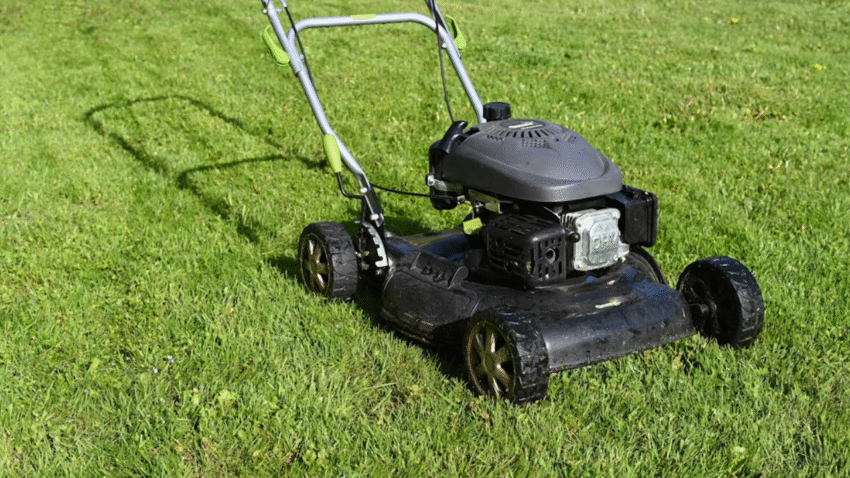Introduction
Are you frustrated with ugly wheel tracks or deep ruts appearing in your lawn after mowing? Learning how to avoid ruts and tracks from mowing can protect your turf’s appearance and health. In this step-by-step guide, you’ll discover simple techniques to prevent compaction, keep your soil in good shape, and achieve a smooth, lush yard — no matter how often you mow.
Why Avoiding Mower Ruts and Tracks Matters for a Healthy Lawn
Ruts and tracks may look minor, but they can lead to serious lawn issues over time. Repeatedly mowing over the same paths compacts your soil, restricting water and nutrient flow to grass roots. This weakens your turf, encourages weed growth, and can create pooling water that turns your lawn into a muddy mess after rain.
Once ruts form, they’re hard to fix. Preventing them is far easier than repairing compacted soil or re-leveling an uneven lawn. A few adjustments to your mowing habits can make all the difference — helping your grass grow thicker, greener, and free of unsightly wheel marks.
Step-by-Step Guide to Preventing Ruts and Tracks
Here’s exactly how to keep your lawn smooth and healthy while you mow:
1. Mow When the Lawn Is Dry
Wet soil is much more prone to compaction. Avoid mowing after heavy rain or early in the morning when dew is heavy. If your shoes sink into the ground or come away muddy, wait until the lawn dries out.
2. Alternate Your Mowing Pattern
Don’t mow in the same direction every time. Change up your mowing pattern weekly — try horizontal, vertical, diagonal, or even circular routes. This distributes wheel pressure more evenly across the lawn, helping prevent worn paths and soil compaction.
3. Use the Right Mower for Your Lawn
Heavy ride-on or zero-turn mowers can create deeper ruts on small or soft lawns. If your yard is small or the soil is clay-heavy and easily compacted, consider using a lighter walk-behind mower instead.
4. Maintain Proper Tire Pressure
Check your mower’s tire pressure regularly. Overinflated tires can dig into your soil more easily. Follow your manufacturer’s recommended PSI for best results.
5. Slow Down and Take Wide Turns
Sudden stops, sharp turns, or fast pivoting can tear up turf and leave deep tracks. Take turns gradually and keep your speed steady and moderate to minimize soil disturbance.
6. Avoid Mowing the Same Day You Water
Freshly watered lawns have softer soil that’s more likely to rut under your mower’s weight. Try to water a day or two before mowing to let the soil firm up.
7. Use Grass Catchers Wisely
If you bag your clippings, empty your grass catcher often. An overly full bag adds extra weight to your mower, pressing down on the soil more heavily and increasing the risk of ruts.
8. Fix Minor Ruts Early
If you notice small depressions forming, fix them quickly before they get worse. Loosen the soil with a garden fork, add a light layer of topsoil if needed, and reseed the area. Light foot traffic can help level the soil naturally.
Common Mistakes to Avoid
Mistake 1: Always Mowing in the Same Pattern
Solution: Switch up your mowing route every time to avoid creating permanent wheel paths.
Mistake 2: Mowing When the Ground Is Wet
Solution: Wait until your lawn is dry enough to walk on without leaving deep footprints.
Mistake 3: Using an Overloaded Mower
Solution: Empty your grass catcher frequently and don’t overload your mower with unnecessary attachments.
Mistake 4: Ignoring Tire Pressure
Solution: Check your tire pressure once a month and keep it within the recommended range for even weight distribution.
Mistake 5: Turning Too Sharply
Solution: Slow, wide turns reduce turf tearing and minimize ruts.
Extra Lawn Care Tips & Hacks
✅ Aerate Your Lawn Regularly: Annual core aeration helps relieve soil compaction, giving roots better access to air and water. This strengthens your grass, making it less prone to rutting.
✅ Add Organic Matter: Top-dress your lawn with compost or soil conditioner to improve soil structure and drainage. Healthy soil resists compaction better.
✅ Use Board Tracks for Heavy Mowers: For exceptionally soft spots or new lawns, laying down wide boards temporarily under your mower’s tires can help distribute weight and prevent damage.
👉 Don’t miss our guide on “How to Level an Uneven Lawn” if you need to repair existing ruts or low spots!
Conclusion
Wheel tracks and mower ruts don’t have to be part of your lawn’s story. By timing your mowing, switching patterns, maintaining your equipment, and practicing good soil care, you’ll keep your yard smooth and beautiful all season long.
Bookmark this guide so you’re ready to protect your turf from unnecessary damage — and enjoy a healthier, more resilient lawn year after year.
